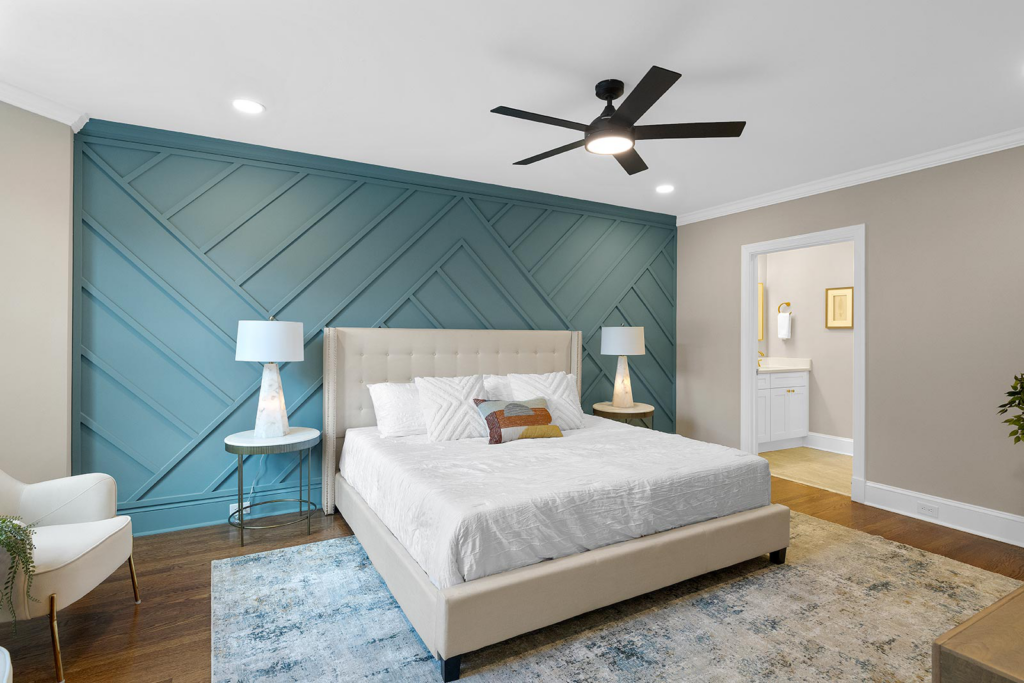Professional interior design is more than just aesthetics; it’s a strategic investment that enhances functionality, boosts comfort, and increases property value. Whether you’re considering a commercial or residential space, expert design can transform the way people experience a space. As we move into 2025, here’s why professional interior design continues to matter and how it benefits both commercial and residential settings.
1. Enhanced Functionality and Efficiency
Functionality is key in 2025. Professional interior designers maximize the use of space, improve workflow, and enhance efficiency. In commercial spaces, this means designing layouts that facilitate productivity and customer interaction. In residential settings, it’s about creating spaces that streamline daily activities and accommodate family needs. Well-designed interiors ensure that every square foot serves a purpose, contributing to a more organized and efficient environment.
2. Boosting Property Value

Investing in professional interior design can significantly impact property value. For commercial properties, a well-designed space attracts top clients, tenants, or buyers, potentially increasing property value and rental rates. In residential settings, aesthetically pleasing interiors make a home more attractive to potential buyers and command higher sale prices. Studies show that staged homes and well-designed commercial spaces tend to sell faster and at better prices.
3. Brand Identity and Image
Interior design plays a crucial role in shaping brand identity and image. In commercial spaces, it reflects a company’s values, culture, and professionalism, influencing how customers perceive the brand. For businesses, a well-designed space communicates messages and builds brand loyalty. In residential settings, interior design helps homeowners express their personality and create a welcoming environment that resonates with their lifestyle.
4. Improved Employee Productivity and Satisfaction
The environment significantly affects employee satisfaction and productivity. In commercial spaces, professional interior design focuses on creating environments that reduce stress, foster collaboration, and enhance well-being. Elements like ergonomic furniture, natural light, and comfortable break areas contribute to a healthier and more productive workforce. Similarly, in residential settings, thoughtful design can improve comfort and quality of life, making homes a true retreat from daily demands.
5. Sustainability and Eco-Friendly Design
Sustainability is a key consideration in 2025. Professional interior designers are adept at creating eco-friendly spaces that incorporate sustainable materials, energy-efficient lighting, and responsible sourcing. For businesses, adopting green practices enhances brand reputation and meets consumer demand for environmentally conscious services. In residential settings, sustainable design helps homeowners reduce their carbon footprint and create healthier living environments.
6. Personalization and Customization
With professional interior design, spaces can be personalized to meet specific needs and preferences. From custom furniture to unique color schemes and smart home technology, designers create tailored solutions that reflect individual tastes. This level of customization is functional and aesthetically pleasing, making spaces more comfortable and in line with people’s lifestyles.
7. Adaptability to Changing Needs
As lifestyles evolve, so do design needs. Professional interior designers are skilled at creating adaptable spaces that can grow with their occupants. For commercial properties, this means designing flexible layouts that can be reconfigured as business requirements change. In residential settings, it’s about creating spaces that can evolve with family dynamics, from nurseries to home offices to retirement retreats.
8. Health and Well-Being
Interior design impacts health and well-being. For commercial spaces, good ventilation, noise reduction, and natural light contribute to a healthier work environment. In residential settings, design can improve mental health by reducing clutter, enhancing comfort, and promoting a sense of calm. Wellness-focused interior design practices are becoming increasingly important as people prioritize health in all aspects of their lives.
9. Integration of Technology
The integration of technology in interior design is becoming crucial. From smart lighting and automated systems to advanced climate control, professional interior designers ensure that spaces are functional and efficient. This integration helps businesses stay competitive and homeowners enjoy the convenience of modern living.
10. Aesthetic Appeal
Professional interior design transforms spaces aesthetically. In commercial settings, design can set businesses apart from competitors and create memorable customer experiences. In residential settings, it makes living spaces more beautiful and enjoyable, enhancing daily life and creating an inviting home environment.
Conclusion
Professional interior design is more than a trend—it’s a strategic investment that adds value and improves quality of life. Whether for commercial or residential spaces, expert design can transform environments, making them more functional, attractive, and sustainable. In 2025, interior design will continue to play a crucial role in shaping how we live, work, and interact with our surroundings. Investing in professional interior design services is a decision that pays off in both the short and long term.
Live in your Dream Space with the Help of Dila Design’s Professional Interior Designers
Ready to transform your space with professional interior design? Dila Design offers expert interior design solutions in Richmond, VA tailored to meet your specific needs. Whether it’s a commercial space or a residential retreat, our team can help you create a stylish, functional environment. Contact us today to get started!
